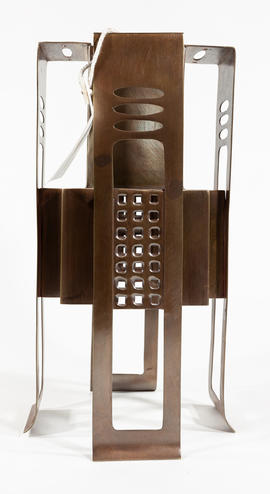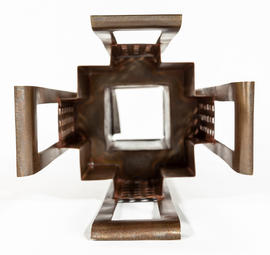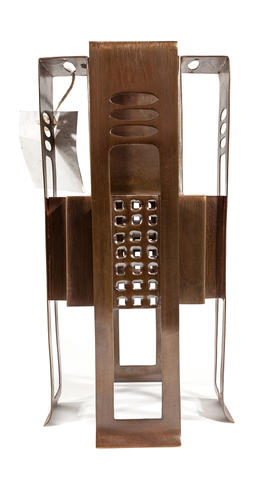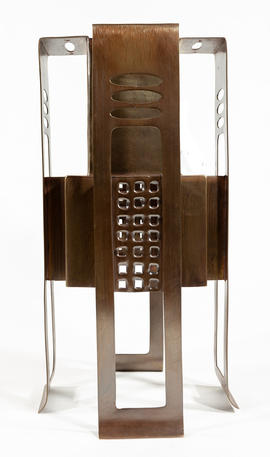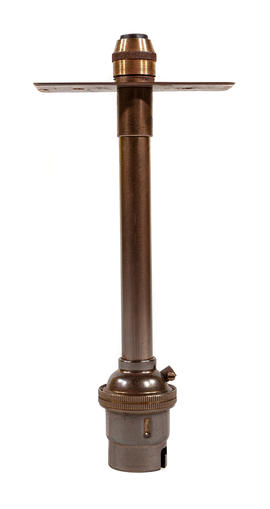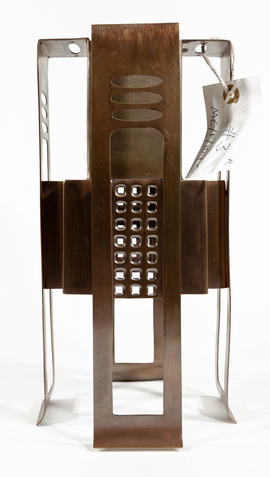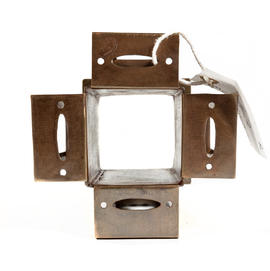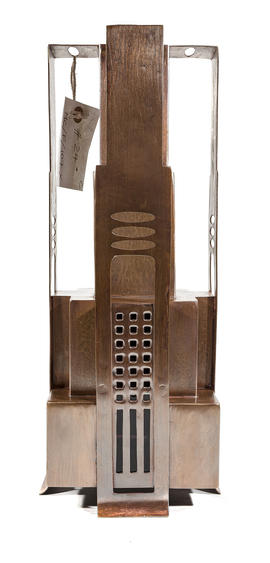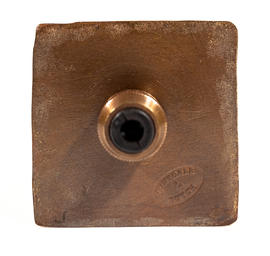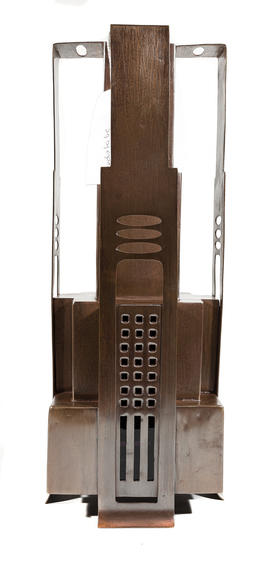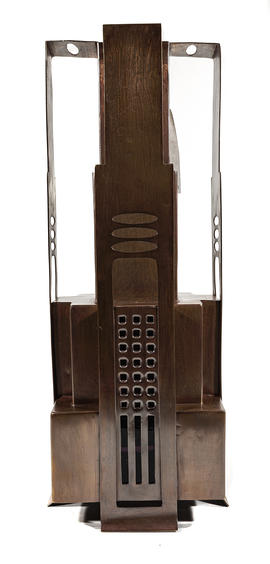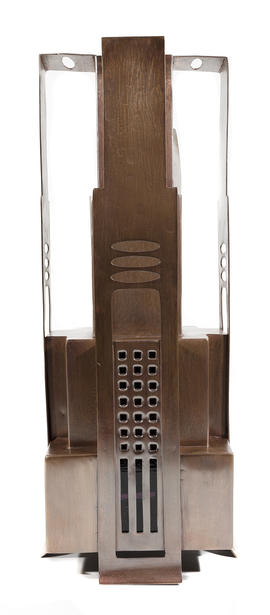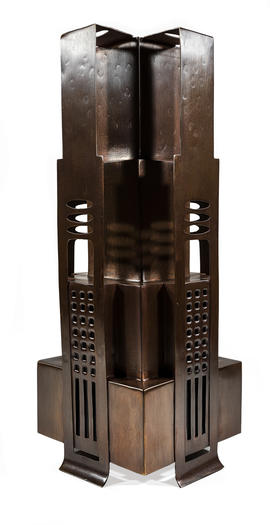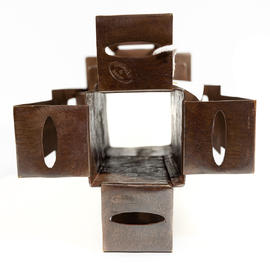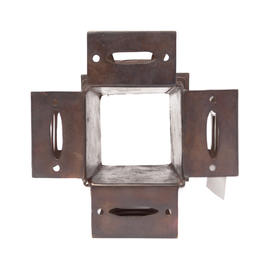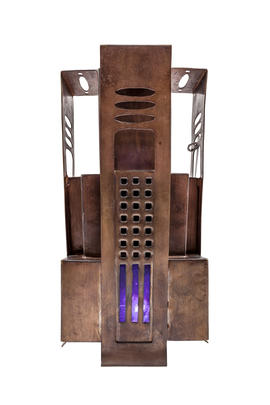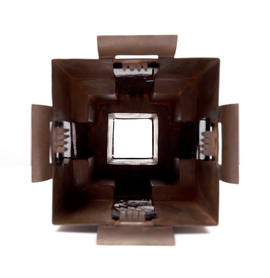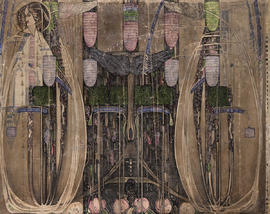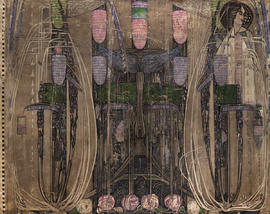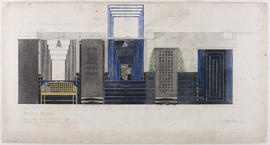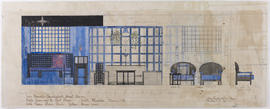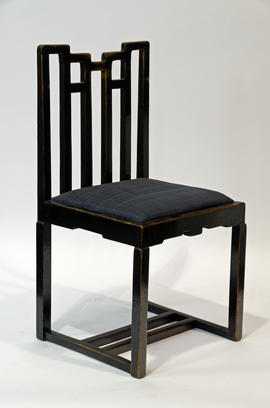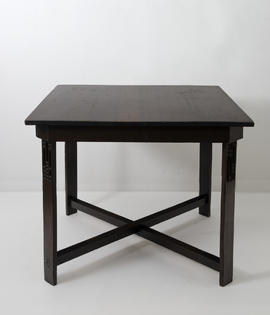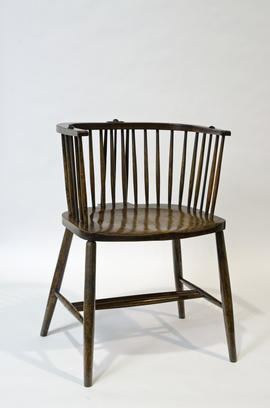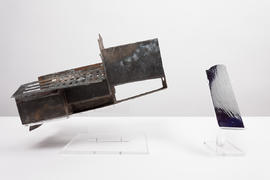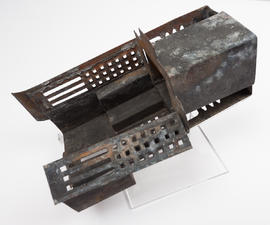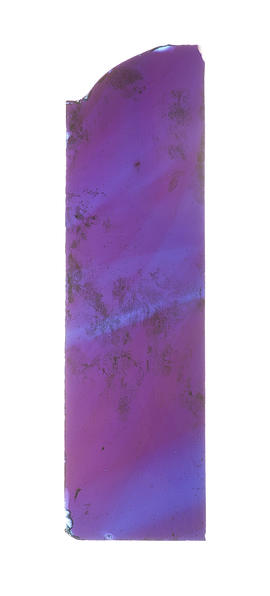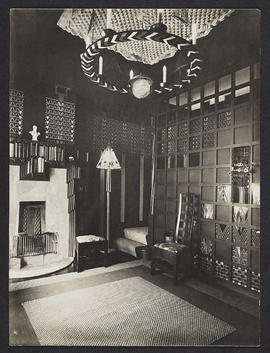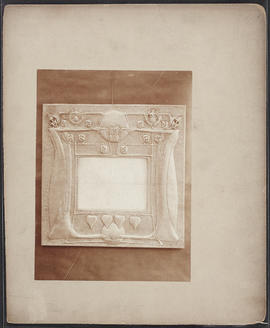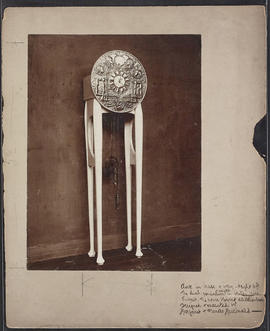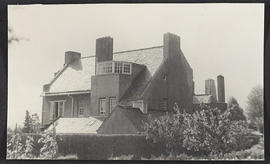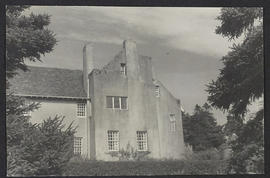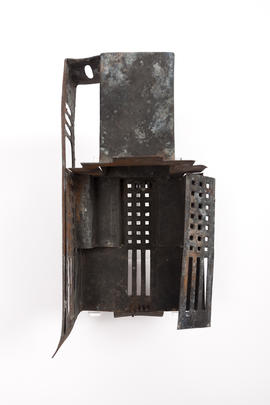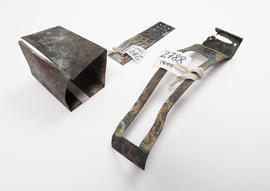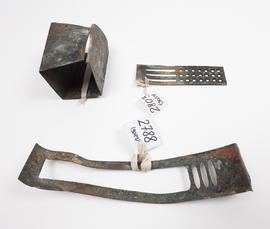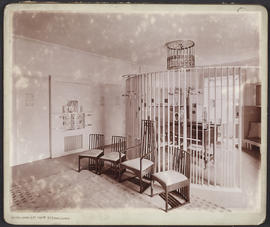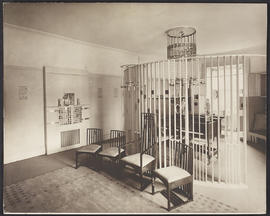Showing 193 results
Archival descriptionLampshade for Library, Glasgow School of Art: Central Cluster- Composite Large Pendant (Version 3)
- MC/F/107X/v3
- Part
- 2017
Lonsdale & Dutch
Lampshade for Library, Glasgow School of Art: Central Cluster- Composite Large Pendant (Version 7)
- MC/F/107X/v7
- Part
- 2017
Lonsdale & Dutch
Lampshade for Library, Glasgow School of Art: Central Cluster- Composite Large Pendant (Version 9)
- MC/F/107X/v9
- Part
- 2017
Lonsdale & Dutch
Lampshade for Library, Glasgow School of Art: Central Cluster- Composite Large Pendant (Version 4)
- MC/F/107X/v4
- Part
- 2017
Lonsdale & Dutch
Lampshade for Library, Glasgow School of Art: Central Cluster- Composite Large Pendant (Version 5)
- MC/F/107X/v5
- Part
- 2017
Lonsdale & Dutch
Lampshade for Library, Glasgow School of Art: Central Cluster- Composite Large Pendant (Version 8)
- MC/F/107X/v8
- Part
- 2017
Lonsdale & Dutch
Lampshade for Library, Glasgow School of Art: Central Cluster- Composite Large Pendant (Version 1)
- MC/F/107X/v1
- Part
- 2017
Lonsdale & Dutch
Lampshade for Library, Glasgow School of Art: Central Cluster- Composite Large Pendant (Version 2)
- MC/F/107X/v2
- Part
- 2017
Lonsdale & Dutch
Lampshade for Library, Glasgow School of Art: Central Cluster- Composite Large Pendant (Version 6)
- MC/F/107X/v6
- Part
- 2017
Lonsdale & Dutch
Lampshade for Library, Glasgow School of Art - Medium Canister (Version 4)
- MC/F/96XX/v4
- Part
- 1907-2016
Mackintosh, Charles Rennie
Lampshade for Library, Glasgow School of Art - Medium Canister (Version 2)
- MC/F/96XX/v2
- Part
- 1907-2016
Mackintosh, Charles Rennie
Lampshade for Library, Glasgow School of Art - Medium Canister (Version 1)
- MC/F/96XX/v1
- Part
- 1907-2016
Mackintosh, Charles Rennie
Lampshade for Library, Glasgow School of Art - Medium Canister (Version 3)
- MC/F/96XX/v3
- Part
- 1907-2016
Mackintosh, Charles Rennie
Lampshade for Library, Glasgow School of Art - Medium Canister (Version 5)
- MC/F/96XX/v5
- Part
- 1907-2016
Mackintosh, Charles Rennie
Wall hanging designed for The Dug-Out, Willow Tea Rooms, Glasgow
- MC/G/56B
- Item
- c1914
This item was lost in the fire in The Mackintosh Building at The Glasgow School of Art on 23rd May 2014. The canvas relates to smaller watercolours in the Hunterian collection, formerly thought to be textile designs, and to their painted canvas, 'The Little Hills' by Margaret Macdonald. It is likely that they were intended for 'The Dug-Out', though it is not known whether they were ever installed there. Jessie Newbery recalled in 1933, that 'He (Mackintosh) and his wife spent the winter of 1914 painting two large decorations for Miss Cranston'. This would have been in Suffolk, after they had left Glasgow. Although The Dug-Out was not created till 1917-18 it is not unlikely that Miss Cranston was considering the project some years earlier. The canvas was found in the GSA in a single roll in 1981 and was cleaned and mounted on two stretchers.
Mackintosh, Charles Rennie
Wall hanging designed for The Dug-Out, Willow Tea Rooms, Glasgow
- MC/G/56A
- Item
- c1914
This item was lost in the fire in The Mackintosh Building at The Glasgow School of Art on 23rd May 2014. The canvas relates to smaller watercolours in the Hunterian collection, formerly thought to be textile designs, and to their painted canvas, 'The Little Hills' by Margaret Macdonald. It is likely that they were intended for 'The Dug-Out', though it is not known whether they were ever installed there. Jessie Newbery recalled in 1933, that 'He (Mackintosh) and his wife spent the winter of 1914 painting two large decorations for Miss Cranston'. This would have been in Suffolk, after they had left Glasgow. Although The Dug-Out was not created till 1917-18 it is not unlikely that Miss Cranston was considering the project some years earlier. The canvas was found in the GSA in a single roll in 1981 and was cleaned and mounted on two stretchers.
Mackintosh, Charles Rennie
Large armchair for the Dug-Out, Willow Tea Rooms
- MC/F/88
- Item
- 1917
Designed for the Dug-Out, Willow Tea Rooms. Very similar to MC/F87, but in a larger scale with flat instead of turned arms. Re-upholstered in blue horsehair 1985. This item was assessed for conversation in 2010 as part of the Mackintosh Conservation and Access project (2006-2010), and then again in 2018 following the fire in the Mackintosh Building in June 2018.
Mackintosh, Charles Rennie
Design for a Memorial Fireplace, The Dug-Out, Willow Tea Rooms, Glasgow
- MC/G/52
- Item
- 1917
Inscribed: This room was opened by Miss Cranston in the year 1917 during the Great European War between the Allied Nations and the Central Powers.The Dug-Out, which Miss Cranston created in the basement of the Willow Tea Rooms was Mackintosh's last work in Glasgow (designed while he was living in London) and develops his new style seen in 78 Derngate. A dramatic interior was created with black ceilings and dark walls highlighted by strong colours in the decorations. The centrepiece was the Memorial Fireplace, decorated with inlaid glass and paintings of the flags of the opposing nations; above the commemorative plaque was a panel of stencilled decoration in chequers, diamonds and triangles, all in the bright colours used in the Derngate frieze. Two interior elevations indicate Mackintosh's schemes for decoration and furniture, some of which survives.
Mackintosh, Charles Rennie
Design for the Dug-Out, Willow Tea Rooms, Glasgow
- MC/G/49
- Item
- 1917
Design for the staircase and vestibule, West Elevation, The Dug-Out, Willow Tea Rooms, Sauchiehall Street, Glasgow. Miss Cranston and her husband Major Cochrane commissioned Mackintosh to redesign the interiors of their home Hous'hill at Nitshill. Mackintosh designed several suites of furniture in 1904 and more pieces in 1909. Stripes are the dominant motif in the decorations, in the panels over the settle and between the doors where they are carried over the ceiling as in the guest bedroom at 78 Derngate. The lampshades are also similar to those used in this bedroom. (Roger Billcliffe). The lattice work recalls the hall at Derngate, but here it is used as an open screen rather than with solid or glazed panels. The only furniture that has been traced is the chair at the writing desk and the small table.
Mackintosh, Charles Rennie
Design for The Dug-Out, Willow Tea Rooms, Glasgow
- MC/G/50
- Item
- 1917
Design for the Restroom, North Elevation, Willow Tea Rooms, Sauchiehall Street, Glasgow. Stripes are the dominant motif in the decorations, in the panels over the settle and between the doors where they are carried over the ceiling as in the guest bedroom at 78 Derngate. The lampshades are also similar to those used in this bedroom. (Roger Billcliffe). The lattice work recalls the hall at Derngate, but here it is used as an open screen rather than with solid or glazed panels. The only furniture that has been traced is the chair at the writing desk and the small table.
Mackintosh, Charles Rennie
Chair for Chinese Room, Ingram Street Tea Rooms
- MC/F/82A
- Item
- 1911
This item was lost in the fire in The Mackintosh Building at The Glasgow School of Art on 23rd May 2014. This item was assessed for conservation in 2010 as part of the Mackintosh Conservation and Access Project (2006-2010). Designed for the Blue or Chinese Room at the Ingram Street Tea Rooms, Glasgow. The fretted back and side rails match the Chinese style motifs of the Blue Room (as called in the job books). Much of the woodwork in the Chinese Room was painted bright blue or red, but there is no trace of any finish having been applied to these chairs other than the ebonising which most of them still display. These chairs have always been associated with the Chinese Room and so must be identified with the entry for thirty-six in the job books (Roger Billcliffe). All the chairs rwere eupholstered in blue horsehair in 1985. The Ingram Street Tea Rooms were purchased by Glasgow Corporation in 1951 for £25,000 and were then rented out as various shops and warehouses.
Mackintosh, Charles Rennie
Domino table for the Chinese Room, Ingram Street Tea Rooms
- MC/F/83A
- Item
- 1911
This item was lost in the fire in The Mackintosh Building at The Glasgow School of Art on 23rd May 2014. This item was assessed for conservation in 2010 as part of the Mackintosh Conservation and Access Project (2006-2010). Designed for the Blue or Chinese Room at the Ingram Street Tea Rooms, Glasgow. The fretted back and side rails match the Chinese style motifs of the Blue Room (as called in the job books). Much of the woodwork in the Chinese Room was painted bright blue or red, but there is no trace of any finish having been applied to these chairs other than the ebonising which most of them still display. These chairs have always been associated with the Chinese Room and so must be identified with the entry for thirty-six in the job books (Roger Billcliffe). All the chairs rwere eupholstered in blue horsehair in 1985. The Ingram Street Tea Rooms were purchased by Glasgow Corporation in 1951 for £25,000 and were then rented out as various shops and warehouses.
Mackintosh, Charles Rennie
Table for the Library, Glasgow School of Art (Version 1)
- MC/F/76A/v1
- Part
- 1910
Mackintosh, Charles Rennie
Windsor chair for the Library, Glasgow School of Art
- MC/F/77A
- Item
- 1910
This item was lost in the fire in The Mackintosh Building at The Glasgow School of Art on 23rd May 2014. Designed for the Library at Glasgow School of Art. This item was assessed for conservation in 2010 as part of the Mackintosh Conservation and Access Project (2006-2010). A more elegant version of the windsor chairs designed for the Dutch Kitchen at Argyle Street (Billcliffe 1906.49). These chairs proved much too delicate for their original purpose; only eight of approximately forty have survived, and all of these have had to be reinforced. They were replaced in the GSA Library c1950 by the much sturdier chairs originally designed for the Ingram Street Tea Rooms, MC/F/67. The Ingram Street Tea Rooms were purchased by Glasgow Corporation in 1951 for £25,000 and were then rented out as various shops and warehouses.
Mackintosh, Charles Rennie
Lampshade for Library, Glasgow School of Art - Medium Canister (Version 1)
- MC/F/96YY/v1
- Part
- 1907-1909
Mackintosh, Charles Rennie
Lampshade for Library, Glasgow School of Art - Medium Canister (Version 4)
- MC/F/96YY/v4
- Part
- 1907-1909
Mackintosh, Charles Rennie
Lampshade for Library, Glasgow School of Art - Medium Canister (Version 5)
- MC/F/96YY/v5
- Part
- 1907-1909
Mackintosh, Charles Rennie
Lampshade for Library, Glasgow School of Art - Medium Canister (Version 7)
- MC/F/96YY/v7
- Part
- 1907-1909
Mackintosh, Charles Rennie
Lampshade for Library, Glasgow School of Art - Medium Canister (Version 8)
- MC/F/96YY/v8
- Part
- 1907-1909
Mackintosh, Charles Rennie
Fragments of lampshade(s) for Library, Glasgow School of Art (Version 7)
- MC/F/96ZZ/v7
- Part
- 1907-1909
The library was destroyed by fire on 23 May 2014, though many metal and glass fragments from the lights were subsequently salvaged. Originally, and according to Mackintosh’s preparatory sketches, there were thought to be 53 individual lights in the library, each with punched holes in the inner reflectors which allowed light to pass through blue and purple glass. The central array was made up of 12 small canisters attached to the light frame on the ceiling, with eight medium pendants and five large pendants hanging below. There were an additional twelve medium canisters attached to the coffered ceiling both above and below the library balcony, making 24. Originally there were also four additional medium hanging pendants in each of the south and western window bays, though these four lights, and the medium canister in the librarians office, had all been removed before the fire in 2014, meaning there were 48 in the library. This small selection of salvaged lights fragments has been retained as evidence of the fire tragedy. These fragments are also surplus to the needs of Rodney French of Lonsdale and Dutch, Edinburgh who has been tasked with reconstructing the entire set of library lights, whilst reusing as much of the surviving fragments as possible.
Mackintosh, Charles Rennie
- MC/P/19
- Item
- c1904
Bedford Lemere & Co
- MC/P/28
- Item
- c1904
Bedford Lemere & Co
Lampshade for Library, Glasgow School of Art - Medium Canister (Version 2)
- MC/F/96YY/v2
- Part
- 1907-1909
Mackintosh, Charles Rennie
Lampshade for Library, Glasgow School of Art - Medium Canister (Version 6)
- MC/F/96YY/v6
- Part
- 1907-1909
Mackintosh, Charles Rennie
Fragments of lampshade(s) for Library, Glasgow School of Art (Version 4)
- MC/F/96ZZ/v4
- Part
- 1907-1909
The library was destroyed by fire on 23 May 2014, though many metal and glass fragments from the lights were subsequently salvaged. Originally, and according to Mackintosh’s preparatory sketches, there were thought to be 53 individual lights in the library, each with punched holes in the inner reflectors which allowed light to pass through blue and purple glass. The central array was made up of 12 small canisters attached to the light frame on the ceiling, with eight medium pendants and five large pendants hanging below. There were an additional twelve medium canisters attached to the coffered ceiling both above and below the library balcony, making 24. Originally there were also four additional medium hanging pendants in each of the south and western window bays, though these four lights, and the medium canister in the librarians office, had all been removed before the fire in 2014, meaning there were 48 in the library. This small selection of salvaged lights fragments has been retained as evidence of the fire tragedy. These fragments are also surplus to the needs of Rodney French of Lonsdale and Dutch, Edinburgh who has been tasked with reconstructing the entire set of library lights, whilst reusing as much of the surviving fragments as possible.
Mackintosh, Charles Rennie
Fragments of lampshade(s) for Library, Glasgow School of Art (Version 5)
- MC/F/96ZZ/v5
- Part
- 1907-1909
The library was destroyed by fire on 23 May 2014, though many metal and glass fragments from the lights were subsequently salvaged. Originally, and according to Mackintosh’s preparatory sketches, there were thought to be 53 individual lights in the library, each with punched holes in the inner reflectors which allowed light to pass through blue and purple glass. The central array was made up of 12 small canisters attached to the light frame on the ceiling, with eight medium pendants and five large pendants hanging below. There were an additional twelve medium canisters attached to the coffered ceiling both above and below the library balcony, making 24. Originally there were also four additional medium hanging pendants in each of the south and western window bays, though these four lights, and the medium canister in the librarians office, had all been removed before the fire in 2014, meaning there were 48 in the library. This small selection of salvaged lights fragments has been retained as evidence of the fire tragedy. These fragments are also surplus to the needs of Rodney French of Lonsdale and Dutch, Edinburgh who has been tasked with reconstructing the entire set of library lights, whilst reusing as much of the surviving fragments as possible.
Mackintosh, Charles Rennie
Interior of Hous'hill, Glasgow - the drawing room
- MC/P/10
- Item
- c1904
The Drawing Room looking towards the Music Room.
Bedford Lemere & Co
Interior of Hous'hill, Glasgow - the music room
- MC/P/14
- Item
- c1904
The music room looking towards the piano.
Bedford Lemere & Co


